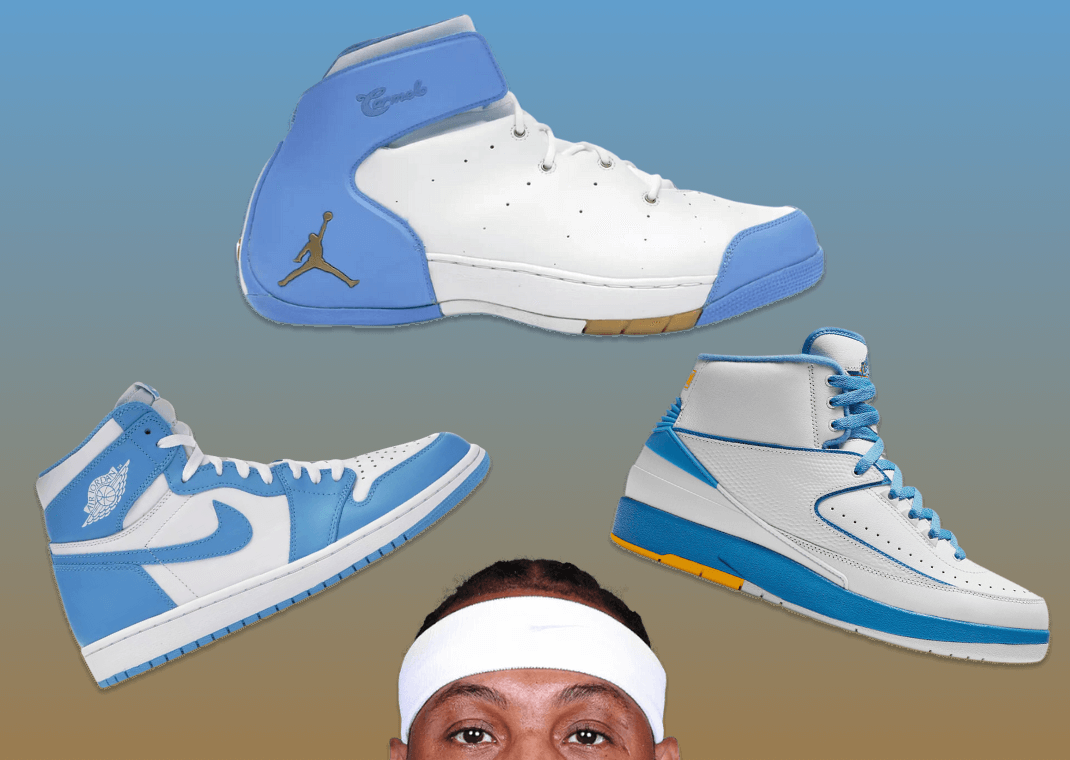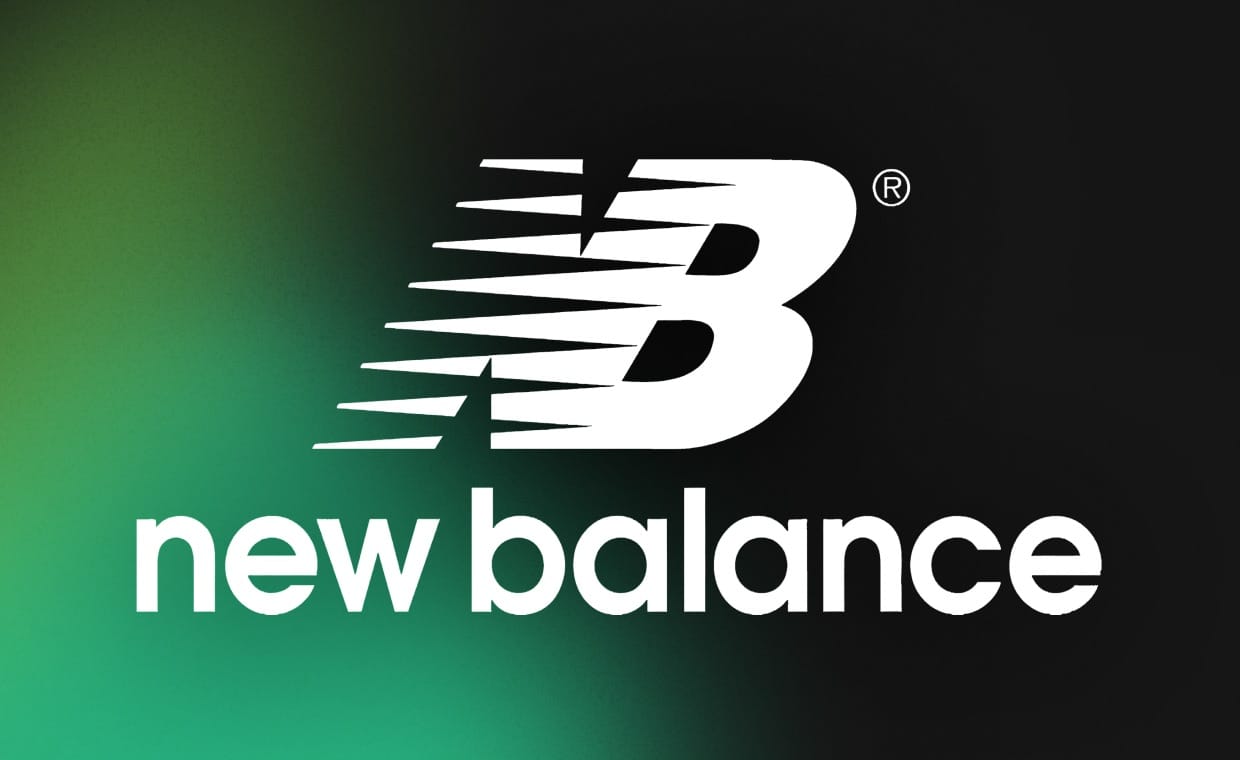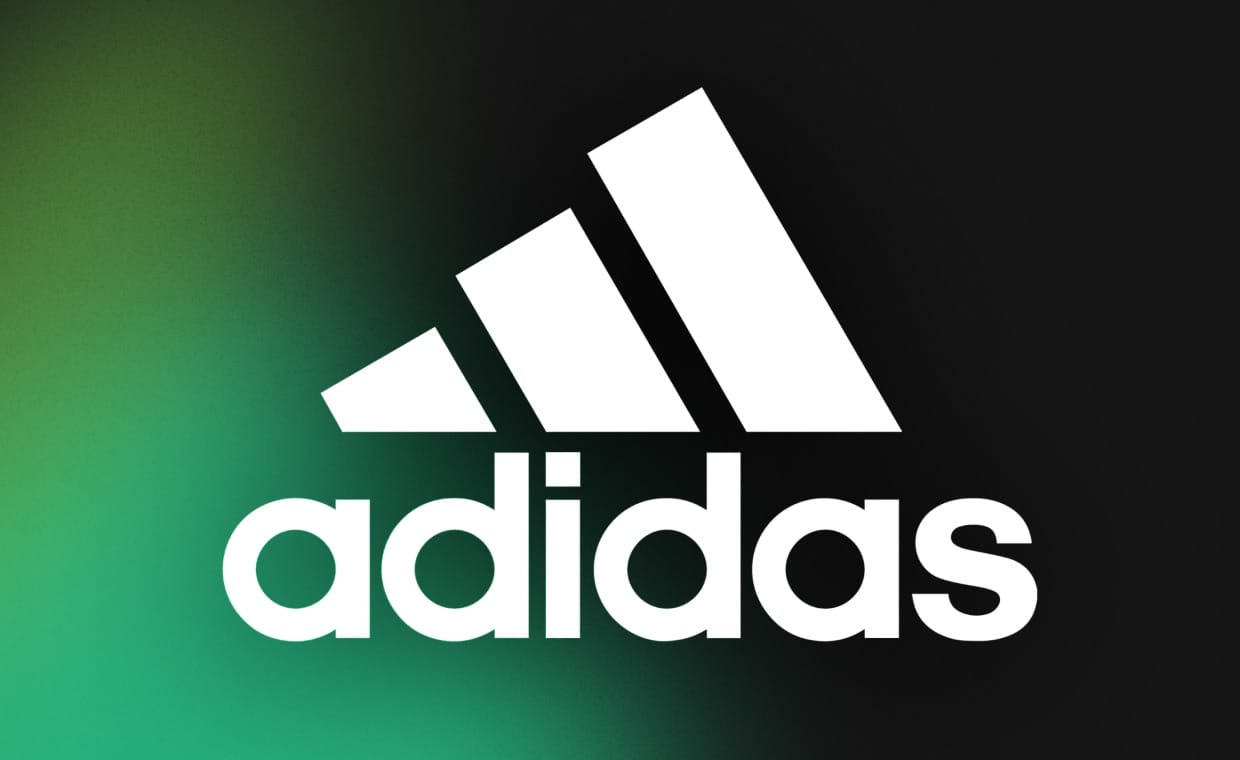Carmelo Anthony’s Biggest Sneaker Influence Is in Hybrid Air Jordans
Published
Carmelo Anthony may be leaving behind a Hall of Fame-worthy basketball career, but there’s even more to his legacy than an NCAA championship, NBA scoring records, and Olympic gold medals. There is also his game-changing line of signature shoes.
Before athletes including Jason Tatum, Russell Westbrook, or even Dwyane Wade and Chris Paul were getting Jordan Brand deals, Anthony was the first player not named Michael Jordan to get a signature shoe from the label. Melo’s first two models didn’t follow the traditional playbook, however, as they were fusions of some of the most iconic Air Jordans.Although this may not seem like a novel idea now, it was a groundbreaking concept at the time.
Jordan was fresh off of his final retirement from the NBA in 2003, and the brand needed a new face to rep the Jumpman for the next generation. Team Jordan included the likes of Mike Bibby, Quentin Richardson, and Darius Miles — but none could bear the weight of carrying a signature sneaker line or had anywhere near the hype Anthony, even before he was drafted.
Melo had been linked with LeBron James since they were in high school, and they both signed landmark sneaker deals before playing an NBA game. Obviously, James was Nike’s chosen king with a $90 million, seven-year contract right out of high school. Anthony got a smaller deal at $21 million for six years after winning a college championship, but his place as the frontman for Jordan Brand marked brand-new territory.
Nike built a debut shoe from the ground up for James in the Air Zoom Generation, while JB took two classics in the Air Jordan 1 and Air Jordan and fused them into one as the Carmelo 1.5. (Technically speaking, neither LeBron nor Melo had a sneaker named “1.”)

Designed by D’Wayne Edwards, the Carmelo 1.5 was modified for 2004 performance standards and borrowed OG detailing such as the old-school Jordan wings logo and heel detailing of the Air Jordan 2. There were also Melo-centric touches in the headband-inspired tongue that wrapped around the ankle.
Anthony’s NBA arrival coincided with the Denver Nuggets changing its colors to powder blue and yellow, the former of which was utilized for the 1.5’s launch colorway. Also reminiscent of Jordan’s University of North Carolina alma mater, the sneaker stood out from anything else on shelves at the time with its picturesque accents on a curvy white base.
It’s understandable why Jordan Brand would incorporate existing design elements to begin Anthony’s signature sneaker line. Melo had high expectations from the jump, but they were still eclipsed by the gigantic shadow of Michael Jordan’s legacy in the game and sneaker industry. In a sense, Anthony’s first signature sneakers were a litmus test for Jordan Brand to see if it could Frankenstein together original Air Jordan silhouettes and still make them still feel new. It ended up proving to be successful.
Anthony’s second signature sneaker, the Jordan Melo 5.5, was a similar exercise, building another performance sneaker off of the template of the Air Jordan 5 and Air Jordan 6. Soon after, the floodgates were opened.

For better or worse, an era of Air Jordan fusions was born. After the Melo 5.5 came a slew of Team Jordan shoes that pulled together distinct elements from across flagship line for on and off the court.
First there was the Dub Zero, Jordan Brand’s mash-up sneaker that combined several flagship Air Jordans from the ‘80s and ‘90s. Then there was the Mars Blackmon-inspired Spi’zike and other “.5” upgraded models in the Jordan 2.5 and 9.5. And who can forget, as much as we’ve tried, the AJF.
This collection of Mr. Potato Head-style sneakers combined the sole of an Air Force 1 with the upper of the Air Jordan 3, Air Jordan 4, Air Jordan 5 and so forth all the way up to the Air Jordan 20. They were polarizing, to say the least, as many purists saw them as official knockoffs. Whichever side of the argument you stand on, there’s no denying that that period in sneaker history was born out of the Carmelo 1.5.
Anthony’s signature line became tailored just for him beginning with the Melo M3 and running for a decade up through the Melo M13. In the latter part of his career, he went back to where it all started by wearing the Carmelo 1.5 once again. The sneaker was even retroed and renamed the Melo 1.5, with new renditions and upgraded materials. New colorways also debuted, including a “Hoodie Melo” version paying tribute to the viral meme.
Other hybrids have followed suit, with the Dub Zero and 6 Rings also re-releasing, calling back to a time of baggy velour tracksuits and T-Mobile Sidekicks.
If getting a retro is the standard of for considering a sneaker a classic, then the Melo 1.5 passes the test. The sneaker goes beyond this threshold, though, as the hybrid was seminal for an entire concept of Jordan designs. What was old always becomes new again — which can be seen in the current revival of numerous other early aughts trends — and Anthony’s first two signature sneakers embodied this truth in an entirely new way.
Keep it locked to our Twitter and the Sole Retriever mobile app to stay updated on the latest releases, raffles, news, and more in the sneaker and streetwear world.


















